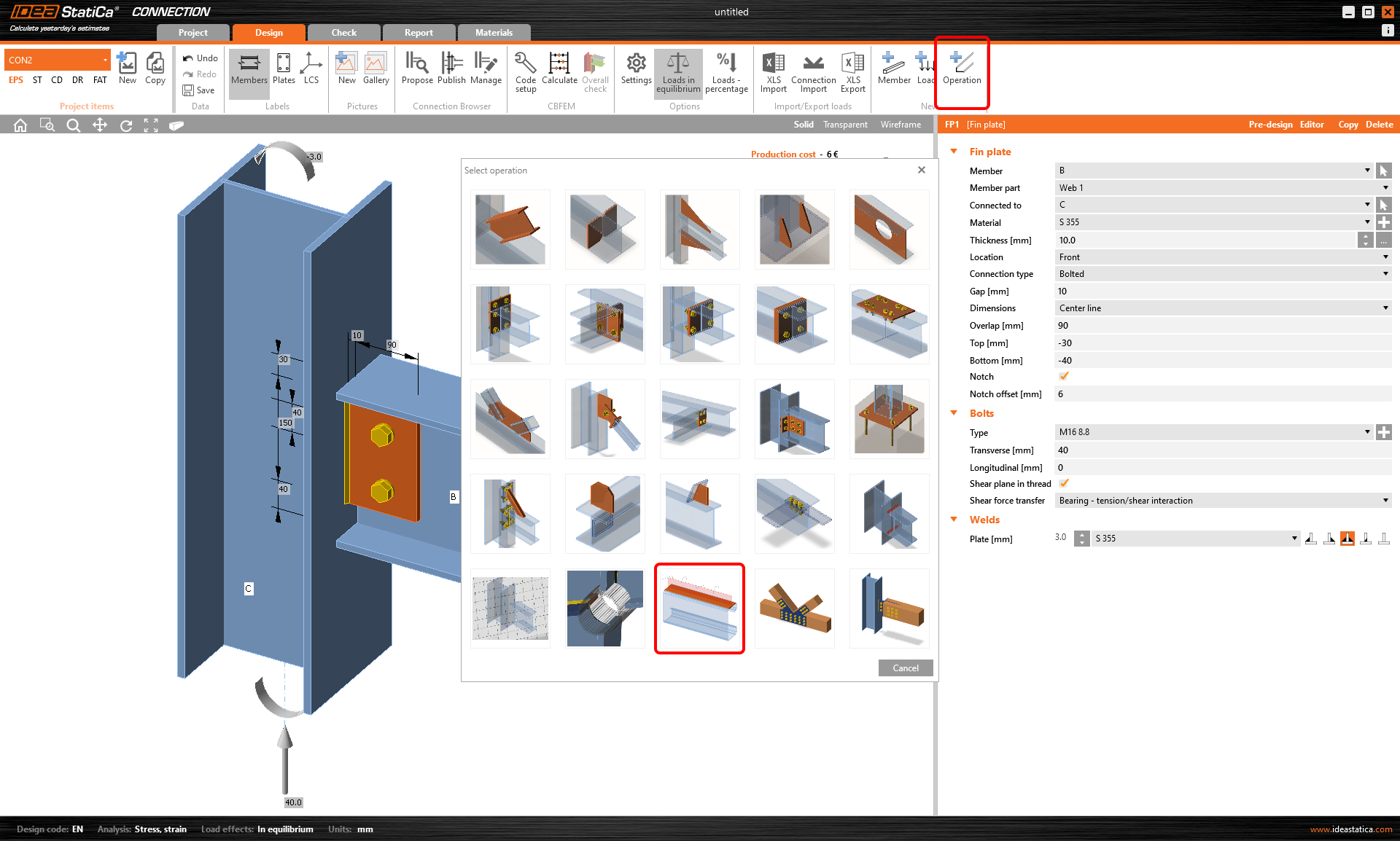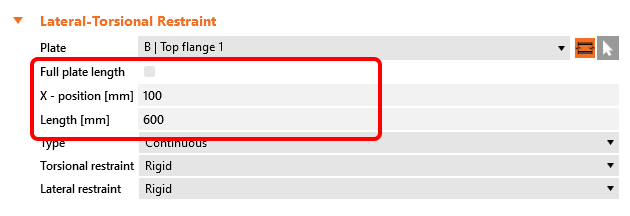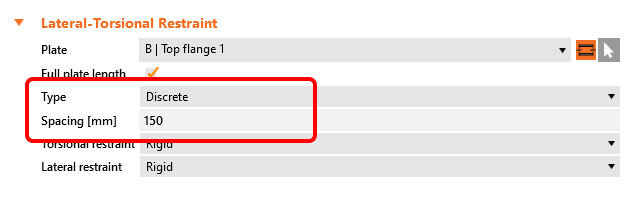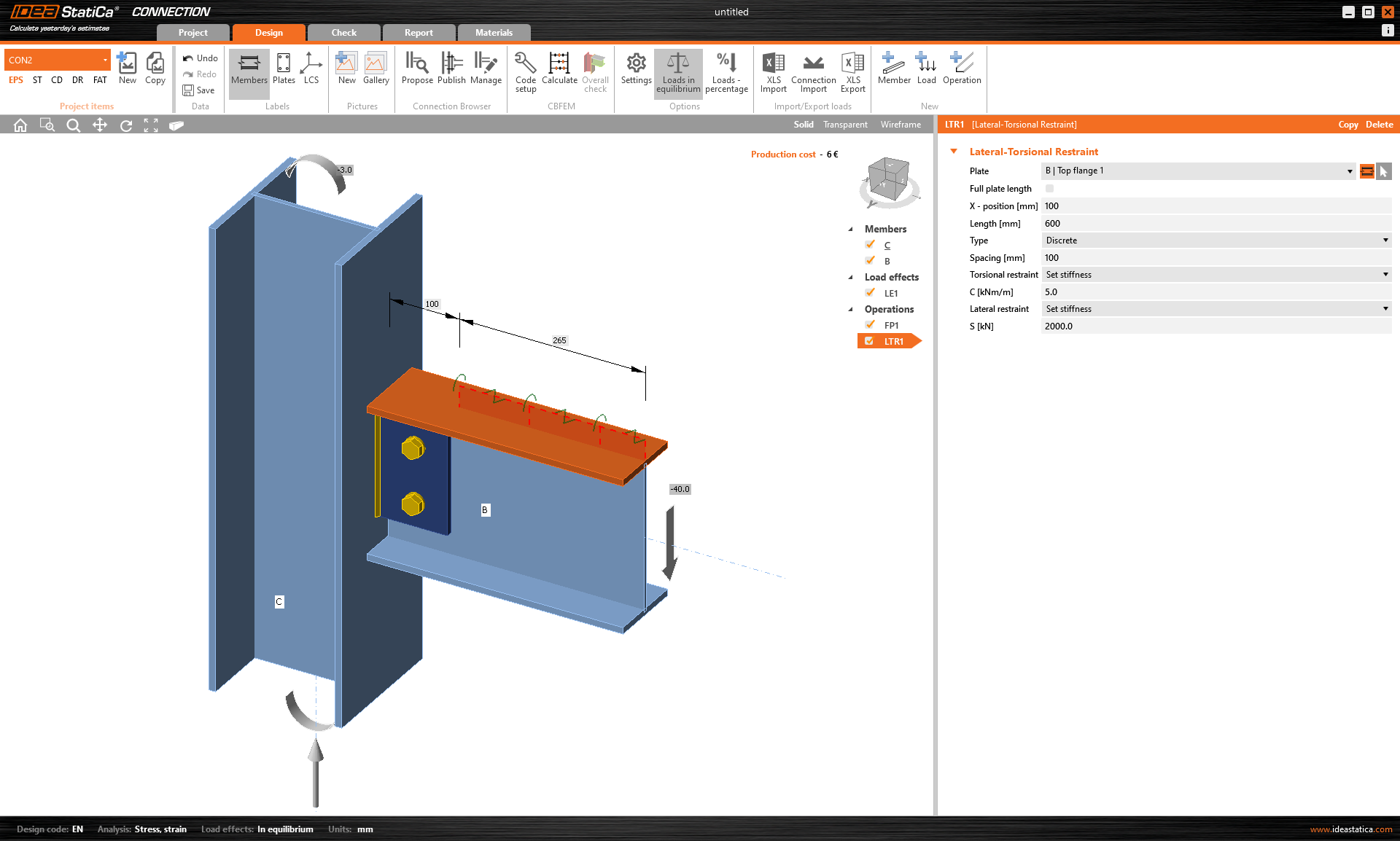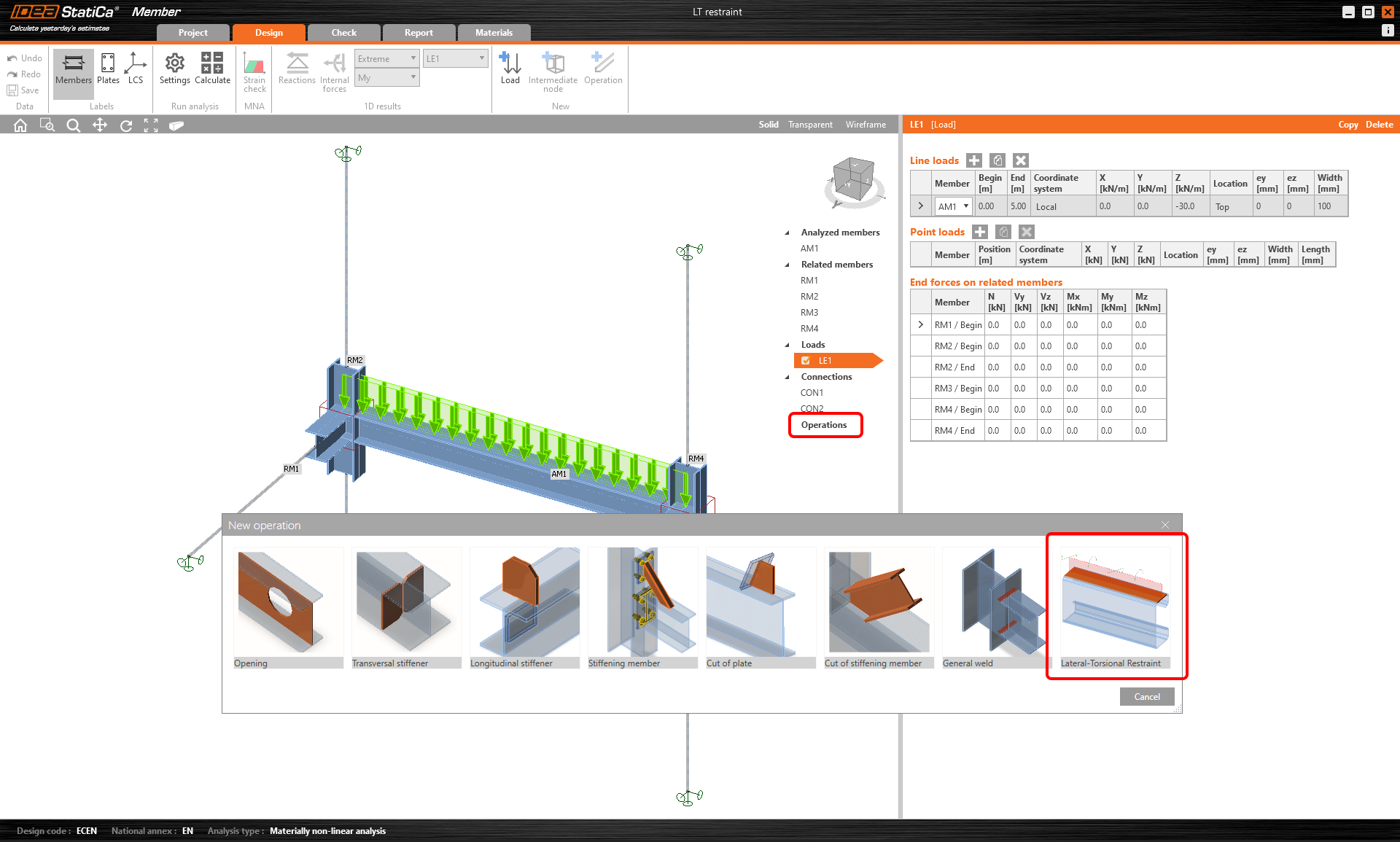Lateral-torsional restraint for members
This feature is useful especially to determine lateral-torsional buckling for members in the Member application and to avoid unwanted torsional deformation and stress of eccentrically loaded members in the Connection application.
Both symmetric or asymmetric members are loaded in the center of gravity but because the deformation of the top flange is typically restrained, torsion is neglected. Such members can now be analyzed correctly.
A manufacturing operation has been added to Connection.
The length of the restraint can be either full or partial.
The restraint can be set as continuous or discrete.
And the stiffness of the torsional or/and lateral restraint can be defined independetly as free, rigid or with a specific value and this can be set independently for torsion and lateral buckling.
For a better understanding of the stiffness values, see the document European Recommendations on the Stabilization of Steel Structures by Sandwich Panels.
The operation Lateral-Torsional Restraint has been added to the Member application as well.
Available in both Expert and Enhanced editions of IDEA StatiCa Steel.



